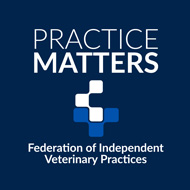Scottish zoo prototypes giraffe enrichment system
The prototypes explored whether giraffes would play humming noises rather than humming themselves.
Researchers from the University of Glasgow have collaborated with a Scottish zoo to develop a prototype enrichment system for giraffes.
The device, which is a world first, allowed five giraffes at Blair Drummond Safari and Adventure Park to trigger sounds on demand using interactive methods.
The study was devised to provide the giraffes with engaging activities to maintain their mental and physical health, while also exploring the ways that giraffes entertain themselves when they aren’t sleeping.
Giraffes do not sleep for hours each night, but instead take frequent naps whenever they need, usually for less than 30 minutes at a time. When they are awake at night, they instead seem to hum to themselves, creating a sustained and low-frequency rumble.
The prototype devices were designed to discover whether the giraffes would choose to activate humming sounds from the enrichment systems on demand, rather than humming to themselves. They also examined whether these sounds stimulated the giraffes’ behaviour, and were therefore enriching.
Two different systems were built, which could be interacted with in different ways.
One device was activated by touch, playing sounds only when the giraffes nudged or headbutted a toy hanging in their enclosure. The other device played audio whenever an animal stood close to its proximity sensor.
The giraffes were allowed some time to get used to the devices being in their enclosure before the scientists introduced the sound effects: either white noise or a recording of giraffes humming.
From two months of observation, the scientists saw that the giraffes used the proximity-activated device more frequently, but spent longer using the touch-activated device per use. They suggest that this could mean that, while proximity is effective for getting the attention of giraffes, touch sustains their engagement better.
The researchers also noted that the animals had no preference for either sound effect. After the audio elements was introduced, interactions with the devices began to decline.
The study was led by Dr Ilyena Hirskyj-Douglas, of the University of Glasgow’s School of Computing.
She said: “As it turned out, it seems the sound of other giraffes humming isn’t as appealing as we might have expected, which gives us an important data point to move forward with.
“It could also help unravel the mystery of why giraffes in captivity make this humming sound, which is similar to the vocalisations they make to each other but could have another purpose which they don’t necessarily enjoy hearing played back to them.”
The full study, ‘Hum-ble Beginnings: Exploring Input Modality of Touch and Space for Audio’, is due to be presented at the ACM Interactive Surfaces and Spaces conference on 8 November.
Image © University of Glasgow



 The Federation of Independent Veterinary Practices (FIVP) has announced that its podcast, FIVP Practice Matters, will be returning for a second series next year.
The Federation of Independent Veterinary Practices (FIVP) has announced that its podcast, FIVP Practice Matters, will be returning for a second series next year.